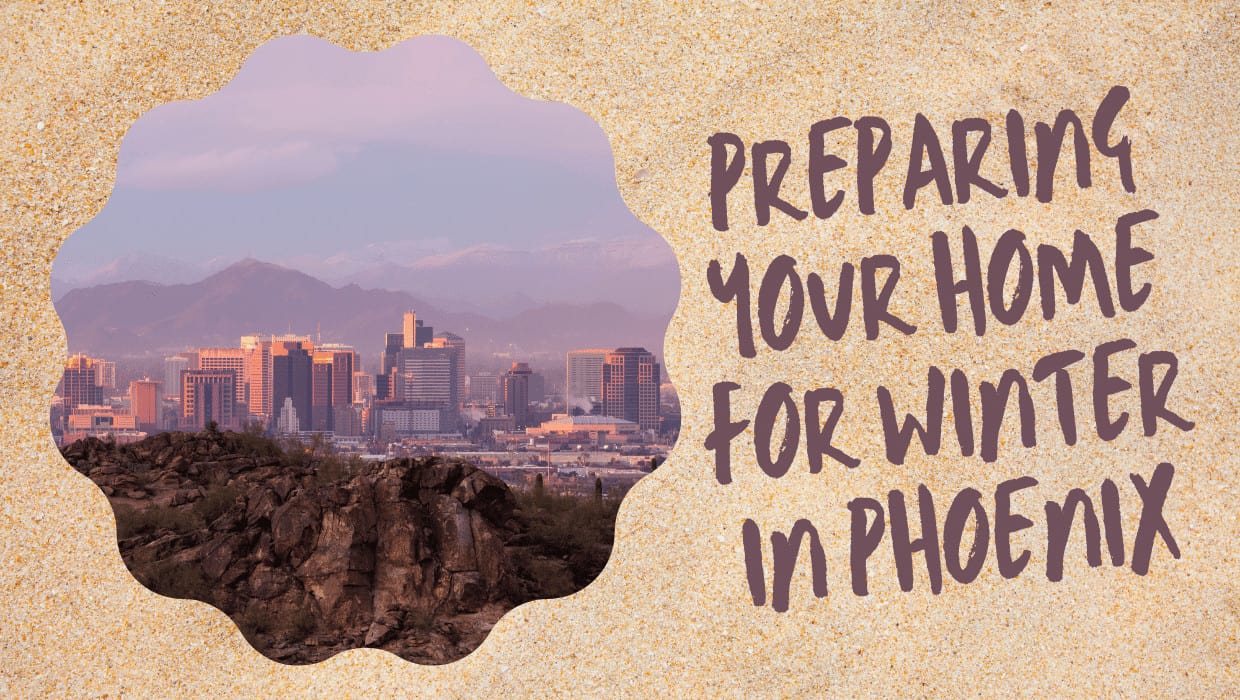- Finding the Right Indoor Plants for Desert Your Home - April 28, 2023
- Common Misunderstanding About Sun Exposure - April 18, 2023
- All about the Arizona Monsoon Season - May 21, 2021
While it seems like we just said goodbye to summer, the chill in the evening air and the diminishing daylight are handy reminders that we’re headed into November and it is time to get your desert home ready for winter. Winterizing in central Arizona isn’t like winterizing in other parts of the country. Lucky for us, our mild winter weather doesn’t require a lot of snow blowers, shovels or de-icers, but you’ll still need to think about some aspects of home maintenance as our temperatures cool.
Drain Your Swamp Cooler
Swamp coolers work great in the hot, dry heat of Arizona summer, but come fall you’ll want to get your swamp cooler system ready for winter. Start by emptying the water from the reservoir of the swamp cooler. Side mounted coolers will usually have a reservoir drain plug you can remove. Roof units will usually need their water emptied using a small container or scoop.
Emptying the reservoir protects the unit from the potential of freezing temperatures and avoids mold, bacteria and insects from moving into stagnant water. If possible turn off the water source to the swamp cooler and drain the hose tubing. Finally, cover the unit with a weatherproof covering or secured tarp.
Winterize Your Pool
Whether you are closing your unheated pool down for the season, or prepping your heated pool for winter weather, you’ll want to shift the pool chemistry to suit the season. Regardless of weather you will be closing your pool, begin by tapering off the chlorine you add. With less direct sunlight in the cooler months, the significant amount of chlorine lost to sunlight is reduced. Even if you use your pool during the winter, activity is usually reduced, which also requires less chlorine to maintain balance.
Closing your pool for the season involves several steps. First, you’ll want to adjust the water pH levels into the range of 7.2-7.8, slightly alkaline. Water pH is something you’ll want to keep a close eye on throughout winter. Changes in pH can happen quickly throughout the season. With less pool use there’s also the chance pH fluctuations may go unnoticed allowing algae growth or scaling to develop.
Once pH is established, run your pool filter continuously for a full 1-2 days and remove any dirt and debris from the water. Before covering your pool, drop the water level to its recommended depth for non-use (if you are unsure of where this is consult the pool manufacturer). Finally, add algaecide and cover the surface of your pool for the season.
Prepare Your Heating System
In Arizona, we think about our heating systems less than the rest of the country, so it is important to consider yours now before the chilly weather blows in. To make sure your heating system works properly, it is important to have clean filters and unobstructed vents. Go through your home and vacuum vent openings to keep them free of dust and debris buildup. Clean reusable filters and replace disposable filters. Your system will work best if you make changing and cleaning the filters a monthly routine.
If your heating and air conditioning are all part of one HVAC system, it is especially important to schedule regular maintenance to keep everything performing well. Even a system that is just heating should be maintained annually to check for small problems before they develop into bigger ones.
Open Your Fireplace
A few months ago, sitting by a toasty fire may have been close to the least appealing idea you could think of, but as the evening temperatures begin falling, we begin remembering what a joy it can be to have a fireplace. To prep your fireplace for the season, you’ll want to make sure no fire hazards are present in and around your chimney.
Before your first fire of the season, make sure to have your chimney swept. An annual chimney sweeping cleans out fireplace creosote, a build up of oily tar-like residue that can cause house fires. Examine your chimney for cracks and obstructions. Remove debris, animal nests, and other objects in and around the chimney’s opening. Make sure chimney components aren’t rusty or corroded and make necessary repairs. Finally, before stoking a fire remember to open your fireplace damper. Check with your hand to make sure you can feel airflow entering the fireplace before setting your fire.

